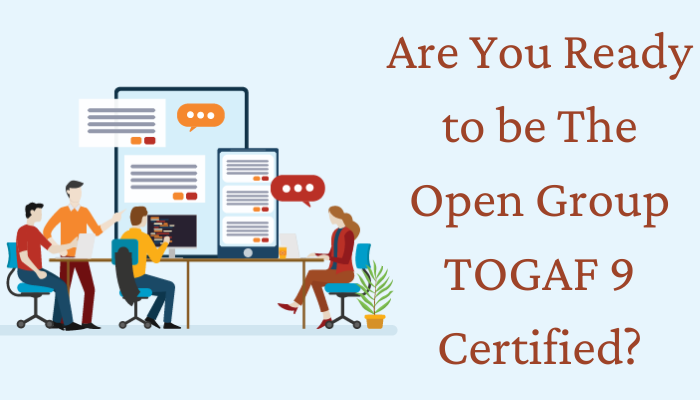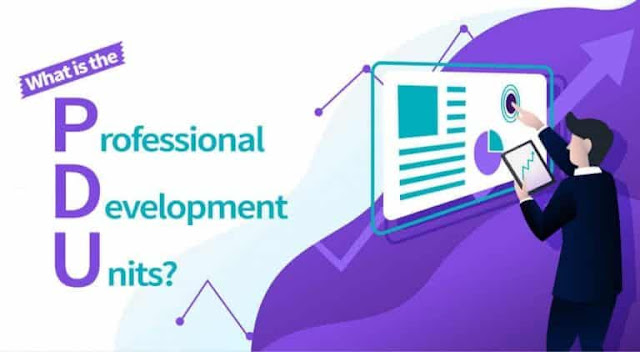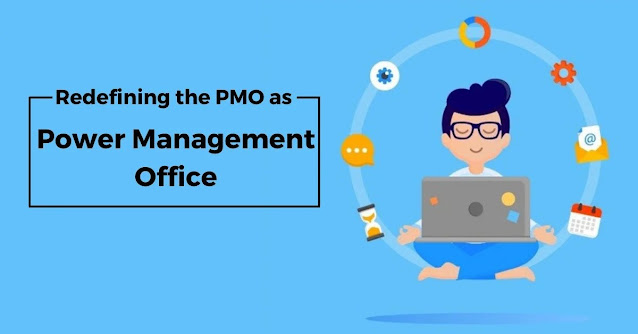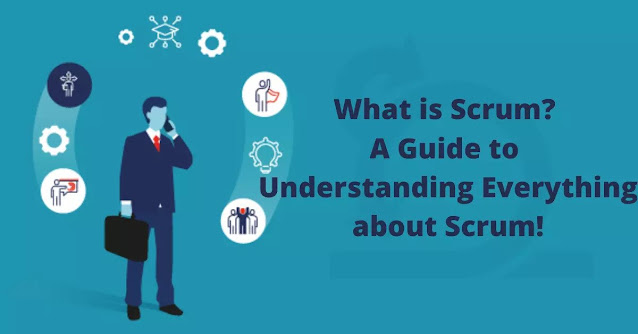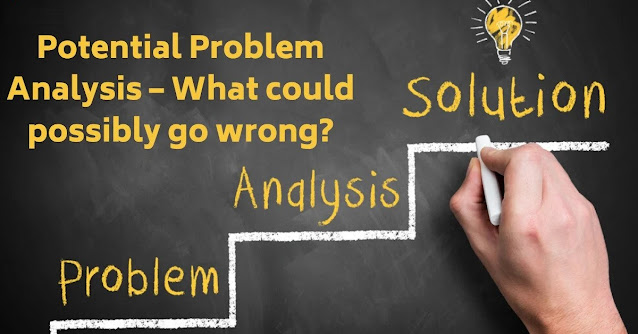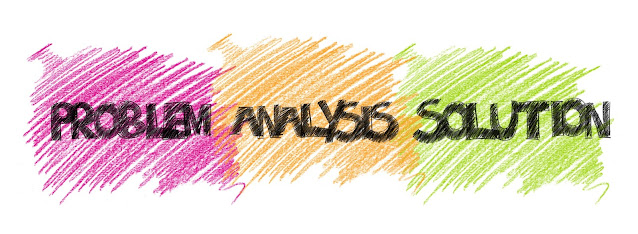Wednesday, 29 September 2021
Top 10 Tips for Successful Implementation of Lean and Six Sigma
Tuesday, 28 September 2021
How to Read Effectively For the Open Group TOGAF 9 Part 2 Exam?
The TOGAF 9 standard is the initial generic framework in the field of IS/IT Architecture. It contains substantial guidance on what to do to establish an architecture practice and how to use it in connection with planning the longer-term transformation of the enterprise (strategic architecture) and designing capabilities to support it.
The TOGAF 9 Part 2 exam deals with the certified concepts and looks beyond the essentials to give delegates a deeper understanding of the framework Version 9.2. It also spans the Learning Points required to take the TOGAF Level 2 exam, and during the course, delegates will be encouraged to prepare for this exam.
Learning More About TOGAF 9 Part 2
Created to help companies design and implement IT strategies in line with the standards, TOGAF is part of the success of many businesses. TOGAF 9 Part 2 takes the advanced approach in helping enterprises to ensure efficacy in the workplace. In simpler terms, TOGAF is a precise method or a framework to create an enterprise architecture.
Because of such a moment, many professionals are now eyeing to become TOGAF 9 certified. If you wonder what the number 9 in the certification name is, it is the version number. TOGAF Part 2 certification is intended for enterprise architects who want a remarkable career in this global framework.
OG0-092 Exam: TOGAF 9 Part 2
Upon successfully passing the first part of the TOGAF Part 2 certification exam, you move to the second portion, the OG0-092 exam. Take note that you require to complete both exams on the same day, at the same test center. Similarly, this is an open book test that revolves around scenario-based problems and difficult multiple-choice questions.
An electronic file of the TOGAF 9 standard is given for your reference. However, hardcopy books are not allowed within the test centers. This 90-minute exam concentrates on your practical skills through 8 challenging questions. Yes, only eight questions to determine your TOGAF 9 completeness. To pass the second portion of the TOGAF Part 2 certification exam, you should have 24 points out of the total 40 points, or 60% out 100%.
Preparing for Your TOGAF 9 Part 2 Certification
TOGAF 9 Part 2 exam preparation has never been an easy task. It entails lots of sacrifices, physical, mental, emotional, and even financial. So, it would be best if you had a study plan to cover all topics and have extra time for review.
Start with books, particularly TOGAF 9 Certified Study Guide. Both books are excellent introductory materials because they are well-structured and concise. Plus, these have all the essential information you require for the two TOGAF exams.
After books, you can also hit on videos and training courses that will increase your understanding reach. Another excellent way to ensure that you are more than a hundred percent ready for the exam is to take some practice tests. And if you require quality practice tests, make your way to ProcessExam, a popular online mock exams website with an extensive collection of questions as well as training courses for top certifications.
All online practice exams offered by ProcessExam are tailored to fit all walks of professional life. Their TOGAF 9 Part 2 exam questions are divided into two files the free and the premium. If you do not require to spend a single penny on study materials, you do not have to worry because they have free files for various certifications. On the other hand, if you require a more in-depth exam reference, go for the premium files and cash out a minimal amount.
Enjoying All TOGAF 9 Part 2 Advantages
For TOGAF 9 certified professionals, taking a job would be much easier because of the international acceptance of your extra credential. Plus, the salary increase makes it more fulfilling. As per PayScale, most TOGAF certified enjoy an average salary of $80,000 or more. But more than the financial rewards, becoming accredited means that you have fully explained your ability in enterprise architecture through a common, standard language. Your career is not boxed in a particular industry. You have the opportunity to determine where you want to apply your certified expertise, from banks to IT corporations to hospitals and more!
Conclusion
Getting a world-renowned certification like TOGAF 9 is an outstanding achievement to be proud of. TOGAF is given by a globally recognized provider who has proven its worth in the industry. But of course, getting such a recognized credential is not an easy-to-do task. It is a relatively challenging journey that consists of two perplexing exams. So, do not get left behind and start demonstrating your commitment to enterprise architecture through TOGAF 9 Part 2 certification.
Monday, 27 September 2021
Professional Development Units: What is PDU in PMP?
If you are a PMP or preparing for the PMP certification, you have probably heard about Professional Development Units (PDUs) and wondered how they differ from contact hours.
Today’s blog post will explain PDUs, why you need them, and how they compare with contact hours.
The PMP credential expires after three years. Therefore, you will need to renew this certification for a further three years, then another three, and so on.
The PMI has developed a renewal system requiring you to learn skills, volunteer in industry events, and give back to the profession.
Taking part in these tasks earns you PDUs which can use to renew your PMP credential for the next three years.
What are PDUs (Professional Development Units)?
PDU stands for Professional Development Unit.
According to the PMI, “Professional Development Units (PDUs) are one-hour blocks of time that you spend learning, teaching others or volunteering.” These are the criteria used to quantify approved learning and professional service activities.
If you attend a course and learn project management skills, you can claim PDUs. One PDU is equal to one hour of activity.
The PDU requirement for each PMI certification is as follows:
Why Do You Need PDUs?
The Difference Between PDUs and Contact Hours
Friday, 24 September 2021
Meeting an impossible project deadline: The sequel
It’s a topic that comes up time and time again, how do you meet an impossible project deadline? We’ve written about completing projects on time before, but we think we may have missed a trick or two, so read on for more actionable solutions for meeting seemingly impossible project deadlines…
Why we should avoid overruns
Tight deadlines are no new thing in the project profession. The majority of projects come in either late, over budget, or both! Late project delivery is destined to be costly in one form or another. Either in terms of resources or staff costs, or in terms of reputation. Project overruns never sit well with a client, as they likely rely upon a completion date for a launch, or for fitting with other business plans.
So, when given an impossible end date, should we just admit defeat and accept the fact that this date will not be met, unless we go over budget to make it happen? Or are there things that we can do as project managers to control and correct this situation?
Question, question, question
There is always a reason for a deadline being impossible to meet. What’s yours? This isn’t about playing the blame game, but about asking why things have taken longer than they should have. Only by questioning what has caused the hold-up can you shoot to resolve the situation.
Perhaps it was poor planning at the initiation stage and it’s a matter of renegotiating? Or maybe there have been delays due to supplies or clients dragging their heels – can your staff get ahead on other tasks whilst waiting in order to not halt productivity further? Has there been scope creep, or are staff overstretched? Do you need to make cuts to scope or onboard more team members? Whatever the issue, identifying it is the first step to solving it.
Go over budget
It’s not just inexperience which leads project managers to promise the moon on a stick to a client! Many of us are guilty of it. Whether to gain much needed business when work is drying up, or in order to win a big client. The completion date can be a deal breaker for many projects. But committing to a tighter deadline than you can realistically achieve is a big problem! It is only going to result in you letting the client down, your reputation being tarnished, and your employees feeling demotivated.
Throwing money at the problem is not usually great business sense, but in the instance of an impossible deadline it can work. If extra budget could speed things along, then it could be the remedy. Go back to your client and have an honest conversation about the situation to see if they can bring any more to the table. Alternatively, absorb the costs yourself. Making the call to sacrifice profit in the short term can be beneficial in the long term if it saves face or lands you future work with that client.
Get creative
When your back is against the wall, it’s time to get creative! Think along the lines of setting milestones earlier than they really are. This will reduce procrastination and give you a contingency so that it is not the end of the world if the tasks overrun. Likewise, reassess your planning and scheduling. Are there tasks that can be completed simultaneously? Can any unnecessary meetings be cancelled, or the number of attendees reduced?
Lead by example, and up your own efficiency. Check emails less frequently, use time management tools, and generally work smarter, not harder. And encourage your teams to follow your lead. Outside of the box thinking can be a lifesaver for inconceivable project due dates.
Make sure it doesn’t happen again
Even with top time management experience and all the best efforts, some deadlines are just unachievable. The best thing you can do in these situations is to be honest and upfront with the client, the team, and any stakeholders.
As well as this, be sure that you learn from it! Establish where the errors have been and be sure not to repeat mistakes in the future. You will have gained a far better understanding of time management, managing resources and risks. You may have also established that there are gaps in yours or your teams’ skills on knowledge. Consider filling these gaps with training courses and skill sharing.
Source: prince2.com
Thursday, 23 September 2021
Redefining the PMO as Power Management Office
Straight Talk
When I ask the question to my peers and friends that what does P stands for in PMO, I always got a typical response like "Projects," "Program," or "Portfolio." How about "Power," "Potential," and "Pioneer"? Why I am referring to these three, let me explain. Processes and governance are vital aspects to ensure smoother Project execution and delivery, but strong leadership skills are essential to ensure a successful outcome. The next question would be to what extent leadership skills are critical? The answer is straightforward; the most significant project outcome is mostly down to the leadership skills and the project team's capabilities running the show. I have witnessed this in my career, and I, too, believe this wholeheartedly. Now one may ask, then how about the worst project outcomes? For the worst project outcomes, I always use a single word, "team," and use such words intentionally. Because I believe it's not down to the Project manager or the portfolio manager or maybe the head of the PMO for that matter. I think it's a team effort, and we all know that a successful team will have great leaders. Strong leadership skills have become essential for making a project successful as they can differentiate success and failure.
Creating the Difference
If someone is looking to improve their PMO or looking to advance their career as a Project Manager, they need to pay strong attention to building strong leadership skills. As per my experience, Project Management Offices led by strong leaders can achieve better results and outcomes. The individuals who have equipped themselves with Strong leadership skills can earn the currency they needed to climb the management ladder.
Best Job in the World
As a Project Management professional, I always think that I have the second-best Job in the World. I still believe that I have the best Job until my multi-talented wife showed me otherwise. Though what we do is excellent from CIO to Project Managers and the Project Team, we are the change catalyst within our organization. Our Organization's IT strategy and the entire business strategy is effectively a Project Manager's responsibility. It is the vision, clarity, Communication, and thought of a Project Manager, which turns the hazy conceptualize projects into a significant market disruptor. Personally, the Project Management/ Project Manager role is exciting, and it's never meant for the fainthearted, timid, or Reticent nature of individuals. It's not only a role; it's a heck of responsibilities and takes the real strength of character. So it's not a role or a most sought job, but it's something that can define & refine one's character.
My Research
I have been doing much research on the "importance of Strong leadership in Project Management." I did search this on google, and it throws me 10+ million results. Well, practically, someone cannot go through all ten million-plus details. So, I checked some of the posts and articles, and most of them appear to be a list of attributes that strong IT leaders must-have. It also shows some books, videos that can turn someone into a great leader. The lists are worth a browse, though they are mostly listed a few of the obvious things like "Clear Communicator," "great motivator," "controlling your emotions," but apart from these, those are a good read for anyone. But one thing I observed that all those articles or posts are missing one of the critical elements. Great leaders indeed need to have "integrity" & "delegation" skills, and they also need to be a "great team builder." Still, I believe it's only 20% because the remaining 80% is always either, You, me, we, or us, i.e., the CIO, the Project Manager, and the Project team. Apart from all, it's an individual's USP, DNA*, and culture, which makes you a great or a strong leader.
Difference Between Success & Failure
The difference between success and failure is always you, me, we, or us. Technically there is no book, article, or post that can ever make you a great leader. The mistakes that we made, the lessons we learn from our mistakes, and our success teach us to become great leaders. Overall it's a career-long process, and the leaders never stop learning. It's a journey that a person has to travel through with having lots of exciting ups and downs. I have added an asterisked DNA because it's a question that has been raised for ages that "Are the Leaders born or made?" Well, it's a mix of both. I have personally seen some people are born leaders. They started good, got very good and now they are excellent. If I had to put a number or percentage for born leaders, it would only be 5-10%. Some have given it a go, no matter how hard they try, how many books they read, or how many seminars attend, but due to their nature, they will never make it to the league of the great leaders. If I had to put a number for these categories, it would be 10-15%. I never meant that these people are not so important, but the novice may not represent the epitome of teamwork and leadership. It only serves as an exciting demonstration of multiple roles when needed to achieve or not to achieve a particular task. They are still essential for smoother project execution and delivery, and they become a crucial part of the successful outcome, but they are not the actual leaders. The CIOs have Project Managers, who are not genuine leaders but can buy in "strength" like a commodity by accessing the Project Management as a service market. Here are the attributes of strong leadership like robust vendor governance, effective SLAs, and KPIs that can be bought in from Project Management service partners who can make it look good and sometimes even better.
Creating the leaders
There is a large space between the two groups of "high-flyers" and "buy-it-inners," where most of the rest of us carry out our trade. Between 75% t0 85% of very good or great, strong Project Leaders were not born, but they are made. I mean, they always have the spark, untapped potential, which inspired themselves and others around them. But they are being made on a day to day, Project to Project to Project basis. CIOs' responsibilities are to nurture their Project Manager's potential and help them or groom them to become strong leaders. They are the future. Jumping out of the comfort zone is what excites me. Because 80% of the Project Leaders are not born, taught in a book, or read in an online list, they are made. It's only because of you, me, we & us. Whether you are a CIO, a Project Manager, or a Project team member, you are powerful as you give birth to a future leader. If the market for this approach is around 80%, then the potential is huge.
What makes a leader be a Strong Leader?
Based on my experience and observation so far, one can become a strong leader only by "knowing themselves." I have worked with various Project Managers, and only a few of them are self-aware and know themselves well. The rest of the Project Manager's don't seem to be looking entirely into the mirror of themselves. The reason why I am emphasizing the point" knowing oneself/ Themselves" is because if someone is not able to see their faults or not able to see their mistakes, then how will they know where to improve? You can’t make Chicken dumplings from fish, no matter how hard you try or how religiously you follow the recipe. You will end up with Fish dumplings. Some Project Managers' careers are built on a false foundation because they can't see that from where they are starting.
Culture can make you or break you.
Organization owners need to create a culture that allows honesty and transparency, where mistakes and faults are not punished or penalized. Still, it provides an opportunity to learn from such mistakes and faults. When an organization owner does it, then it encourages immediate acknowledgement and significant correction of such errors. Thus it provides a truthful mirror to the Project Manager, where they get to know themselves well than before. The best way for a Project manager to know themselves is by inviting and, more importantly, listening to the feedback from up and down the command chain. The C-Suite executives usually provide valuable clues in their every single response. I always like to listen, and I always encourage listening objectively, not adding any filter to our perceptions. Don't project your home movie onto the feedback you are being given.
The Beginning
The main strength of a leader becomes clearer through self-awareness. When one realizes that they have fish, not chicken, you start to know and learn what to do with it. So, when you know who you are, what you are capable of achieving when you see yourself where you went, how you can improve, and when you listen without prejudice, that's when you become a more generous and strong leader, as I have mentioned earlier that it's a career-long process. You won't be as great or as strong today as you will be in the future, but you already knew that with self-awareness.
Source: novelvista.com
Wednesday, 22 September 2021
What is Scrum? A Guide to Understanding Everything about Scrum!
Scrum is the most widely used agile framework worldwide. Almost three quarters (72%) of the companies that took part in the 13th Annual State of the Agile survey, stated that Scrum is their framework of choice.
WHAT IS SCRUM?
Scrum refers to a framework that makes for effective collaborations among teams that are working on complex products. Although it is most often used by software development teams, scrum can essentially be beneficial to any team that is working toward a common goal. In particular, scrum is a collection of meetings, roles, and tools that work together to help teams better structure and manage their workload.
SCRUM PILLARS AND VALUES
Read More: Scrum Certification
Scrum team roles:
Definitions needed to start scrum:
Scrum artifacts
Scrum events
Activity and user-related terms
GETTING STARTED WITH SCRUM
Monday, 20 September 2021
Potential Problem Analysis What could possibly go wrong
Many service management disciplines experience risk as, in reality, flawless information is beyond the realm of imagination – quite a bit of what we do will include a level of vulnerability.
Regardless of whether we are executing changes to complex frameworks, concocting catastrophe situations for progression arranging, endeavoring to react to a significant occurrence with deficient data, or foreseeing innovation headways, we are anticipating the future with different degrees of certainty.
ITIL and PRINCE2 have a best practice stablemate as M_o_R (Management of Risk, and an irritatingly organized abbreviation… ) and the University has direction on hazard the executives, notwithstanding, the Kepner-Tregoe approach is in congruity with these.
It would be ideal if you note that hazard examination applies similarly to circumstances and dangers – in some cases, an alluring result isn't ensured and should be made sure about, similarly as danger may need to keep away from.
1. Identify potential problems
We have to ask what may turn out badly with our expected game-plan, or what opportunity may emerge – however we'll kindly quit copying the great at this point! M_o_R would demand that all the possibilities are recorded and at exactly that point trimmed down to those values growing further (in light of effect, likelihood, and nearness), yet frequently for our operational purposes, a thorough posting of dangers isn't required. Instruments, for example, PESTLE investigation (and expansions) can help guarantee that nothing is neglected.
2. Identify likely causes
Every one of the risks (possible issues) will have causes – note the plural, as there are probably going to be various joining or contributory reasons for something turning out badly. Recognizing the numerous reasons for the potential issue gives various focuses on the following stage. A fire requires fuel, oxygen, and a wellspring of start, however expelling just one will forestall it.
3. Take preventative action
Having distinguished the reasons for the possible issue, we would now be able to plan to maintain a strategic distance from or decrease them. Dangers that can't be stayed away from totally can in any case have the effect decreased before they occur (for example try not to tie up your assets in one place!). M_o_R incorporates other hazard reaction alternatives that are less operationally valuable – "risk transfer" (this isn't just avoiding any responsibility, frequently this implies some type of protection), "risk-sharing" (spreading it between more substances). At that point, there's the exemplary "risk acceptance".
4. Plan contingent action
Halting the risk being acknowledged might be the most alluring alternative, however, it may not be conceivable or financially savvy. Once in awhile, we need to trust that it won't occur, yet get ready for it on the off chance that it does… This might be the great rollback plan, or it might be some type of mitigation. Mitigation can be viewed as an effect decrease activity, afterward. Each emergency treatment reaction or fire clearing plan is an unforeseen activity – the University may mean to forestall staff injury and flames, however, it would be careless to overlook such alternate courses of action in the event that the anticipation comes up short!
5. Set triggers
While this may be viewed as a feature of the possibility of arranging, it's frequently disregarded, so worth drawing out independently – by what means will we realize that the possible moves should be made? When will the rollback be activated? Choosing the triggers ahead of time will spare the issue of the "we should proceed" versus "we ought to return" contention in the warmth of the emergency. As usual, SMART triggers will be simpler than dubious articulations.
Source: novelvista.com
Friday, 17 September 2021
What is the CAPM Certification?
The CAPM (Certified Associate in Project Management) certification is one of the most popular certifications for entry-level professionals in project management, and in today’s blog post, we will discuss this credential.
The job market is highly competitive these days. Organizations are looking for cost-cutting measures and improving the efficiency of their processes. They are very particular about who they hire for an entry-level job.
Many applicants who apply have little or no experience. In these cases, employers scrutinize an applicant’s education and certification.
If you haven’t yet gained a lot of experience and are interested in project management, you should earn this important credential. Achieving a recognized certification can help you stand out from the crowd.
There are many organizations offering credentials for project professionals. However, among all, the CAPM certification is the most popular.
In this blog post, we will discuss the CAPM certification in detail.
What is the CAPM Certification?
CAPM stands for a Certified Associate in Project Management. This is an entry-level certification for professionals interested in project management, offered by the Project Management Institute (PMI), USA.
According to PMI, “The CAPM certification offers recognition to practitioners who are interested in or are just starting a career in project management, as well as project team members who wish to demonstrate their project management knowledge.”
You can go for this certification if you have experience in other fields and want to move into project management. A CAPM certification is a great avenue to begin a new career.
How to Get the CAPM Certification
To earn the CAPM certification, you will have to pass a computerized test. The duration is 3 hours, and you have to answer 150 multiple-choice questions. The test does not penalize wrong answers.
Once you pass the test, you can add the CAPM title to your name and signature.
This certification is valid for three years. If you want to renew it, you must complete CAPM CCR Cycle, i.e., earn 15 PDUs in three years and report to PMI. This will extend your CAPM credential for an additional three years.
The CAPM exam eligibility period is one year from the date PMI approves your application. You have three attempts to pass the exam. If you don’t pass the exam in these attempts, you cannot apply again for one year.
Who Can Apply for the CAPM Exam?
As this certification is for entry-level professionals, anyone who has a high school diploma or secondary degree can apply.
Benefits of the CAPM Certification
Employers recognize the importance of project management. They want to improve efficiency and maximize their effectiveness.
This certification shows employers that you know the best practices used in the industry. They will trust in your abilities.
Having the CAPM certification shows your commitment to learning new skills. It shows that you understand project management terminology and its processes.A CAPM title on your resume increases your visibility on the job portals for entry-level positions, making you a more appealing candidate. This certification is valid across all industries and recognized throughout the world.
It demonstrates that you have gone through a rigorous process to achieve this credential, revealing your tenacity and ability to manage projects. It shows your commitment to learning and gaining new skills and will help you take your career to the next level.
Most importantly, the CAPM Certification will boost your self-confidence and customer confidence in your organization.
What is Next After the CAPM Certification?
The CAPM certification is for entry-level professionals. Once you achieve this, the next step is to gain more experience. As soon as you become eligible for the PMP exam, apply for it.
The PMP certification is the most valuable certification for experienced project professionals. It is highly regarded and will help you take your career to the next level.
Having a CAPM certification will help you with your PMP exam preparation. You will have gone through the PMBOK Guide and already understand project management concepts. Having gained this self-confidence, passing the PMP exam will not be very difficult for you.
Source: pmstudycircle.com
Wednesday, 15 September 2021
5 Key Aspects to Overcome Project Roadblocks
Is there really some documented key aspects we need to follow when it comes to project management? Can’t I do it in my own way?
When you have been just assigned to a project as a project manager, you may ask yourself this question quite often.
Read More: PMI Project Management Professional (PMP)
And that is completely relevant too! If you have got no unique style of handling a project, why would your fellow teammates follow you?
Well, let’s analyze it with a simple scenario. Let’s suppose, you plan to cook Pasta. Now, you can cook it with white sauce, red sauce or pink sauce. You can put chicken, meat or vegetables. But no matter which recipe you are going to follow, you still need to use Pasta, Chicken Broth, Pepper Powder and a few more necessary garnishing to it. Right?
Handling a project is kind of similar to this only. You can do it in your own style, but there are some key elements in the project management those you need to remember always.
In this blog, we’re going to tell you about the main key aspects of project management. Make sure to drop a comment below about what would you like to hear from us regarding project management.
Essential Aspects of Project Management:
There are a lot of aspects to project management. They can vary from project to project and organization to organization. But, the vital factors of project management remain the same.
Here are the top five aspects we would want you to look after in order to your next project’s success:
1. Clear Goal:
Walt Disney once said, “Of all the things I have done, the most vital is coordinating the talent of those who work for us and pointing them towards one certain goal.”
Now, the entire world can see how that panned out for him. Don’t you think you, as well should do the same thing?
At the starting of the project, you should set a clear goal for yourself and make sure that the goal aligns with the client requirements. Once you set both your short term and long term goals, you need to make sure that each and every teammate of yours have the same goal in mind and working towards achieving it. The short term goals should be aimed towards the tasks to be done by the team. The long term goals should be aimed towards the end result that a project wants to accomplish.
Once you are set with your goals and you know what you want, one of the important project management objectives is already served!
2. Scopes Of Your Project:
In the field of project management, the scope is defined as a set of boundaries that define the scale of a project. It describes the end result which is supposed to be delivered to the client.
Once you understand the scope of your project, it helps you to understand what falls inside the boundaries of the project and what does not. Activities that fall inside the boundary, are “in scope” of the project. Activities which do not, are mostly “out of scope”.
Whenever you detect an uncontrolled growth in a project’s scope, it’s scope creep. It usually happens when you add a module to your project, scope creep happens.
Scope creep can increase the resources of the project. Hence, having scope creeps in the middle of the project can be risky.
Having a clear understanding of your project’s scopes helps you to avoid scope creeps.
3. A Good Project Manager:
We don’t need to emphasize this one much, as we published an entire article named: Key Points Which Make or Break A Good Project Manager based on this previously.
Still, to brief it out to you again, if a project can be compared to a blood circulation system, the project manager should be compared to the heart. So, just like the blood circulation stops when the heart stops working, the project too will be dead if it lacks a good project manager.
The project manager is the one who sets the goals, strategizes the entire roadmap, and plans out resources to take the project ahead.
Geoff Reiss, a project management author, once said: “Project management is like juggling three balls: time, cost and quality.” This statement sums it all. Doesn’t it?
4. Engaged Stakeholders:
People who are not a part of the project management group but share a vested interest in the project along with the team members are the stakeholders of the project.
The stakeholders are not involved with the project like the other team members or the project managers but will be on loop for critical decisions and the overall progress of the project.
So, you see, since they are not involved in the day to day activity of the team, they won’t be really able to understand what your team is doing. Hence, they can’t be involved in every decision of the project, unless you want to turn the project into a battlefield. Neither they can be shut out completely since one of the key aspects of project management is satisfying the stakeholder.
You need to make sure that the stakeholders involved with the project are well aware of the project management objectives so that they are engaged with the project in order to understand it.
5. Dedicated Project Team:
“Get the right people. Then no matter what all else you might do wrong after that, the people will save you. That’s what management is all about.”- said Tom DeMarco, an early developer of structured analytics.
If you have handled a project management team before, then you know how true the statement is. If you have a dedicated team, your project is already halfway successful. Once your project team is well aware about the short term and long term goals and their responsibilities to reach them, another half too will be over soon!
Once you choose your team according to the project goals, it’s easy to divide responsibilities since the goals align with their skill set. Try doing that once!
Source: novelvista.com
Tuesday, 14 September 2021
How the Change Management Foundation Certification Can Propel Your Career?
The Change Management Foundation certification provides participants with a prior and solid knowledge of the principles of Change Management. The Change Management foundation course is intended to get an experience of why change occurs, how change happens, and what must be done to make evolution a more welcoming concept. In particular, such a course should be delivered in organizations looking for insights into various frameworks and approaches to change at an individual, team, and organizational level.
An interactive approach combines lecture, discussion, and case study experience to prepare participants for the Change Management Foundation certification exam and provide valuable practical knowledge immediately applied in the workplace. Change Management Foundation mock exams are provided and used as preparation for the final test.
What Is the Change Management Foundation Certificate?
It is designed to help you get effective leadership and management throughout change activities that support individuals, teams, and organizations, specifically focusing on change management practices, including communications and stakeholder management. The course is designed to help working professionals effectively plan, implement and manage change initiatives in an organization. It is ideal for individuals from all industries and sectors who require a solid understanding of change management.
How do you show the organization that you are fully prepared to steer the team members through a structural or strategic change phase? The Change Management Foundation Course is a credential that reflects your high opinion of the result of a change in the organization and how to negotiate and help teams combine the new outlooks and skills required to adapt to change most harmoniously and efficiently possible.
Essentially, all the essential knowledge and processes related to change management are codified in the Change Management Book of Knowledge (CMBoK). Change concerning the individual and the organization, stakeholder engagement and communication issues, and change practice are essential topics addressed by CMBoK, a body of knowledge recognized by all the top industry players and innovators.
After successful completion of the exam, students will take the APMG Change Management Foundation certificate. The goal of the Foundation certification is to confirm that a candidate has sufficient knowledge and perception of Change Management to work as an informal member of a team going on an organizational change initiative. The Foundation certification is also a pre-requisite for the Practitioner certification.
What Will You Get from the Change Management Foundation Certificate?
Change management skills will increase your entire management skill-set, adding a new dimension to your professional collection. You will gain many things from a Change Management Foundation Certification course that will set you apart as a reliable and model employee and contributor to the organization.
You will learn to identify the various types of changes that organizations go through. This will enable you to anticipate red flag scenarios and attend to restrictions or bottlenecks effectively. Change in an organization is not organic - it comes with a dedicated plan and is structured to allow as seamless a shift as possible. The Change Management Foundation Certification provides you insights into the various elements of change planning, preparing you for the fallout.
Following the human members with the organizational framework during change is of paramount concern. Co-operation and knowledge are needed for an organization or team to have a smooth transition in process or strategy. The best Change Management courses show you the consequence of communication within this context. Opposition to change is familiar - it is an almost natural phenomenon. The Change Management Foundation Certification empowers participants to approach resistance to change using industry-proven strategies that maintain team morale while not compromising the larger organizational objectives.
Is the Change Management Foundation Relevant to Your Role?
Suppose you work in an industry that is driven by innovation and competition and changing user trends. In that case, you must be prepared to adopt new ideas, operational mechanisms, and targets. Those with management roles bear the most extensive responsibilities for disseminating new practices to team members. Project and program managers will profit significantly from a robust Change Management Foundation module. Those with experience in change management can add this credential to their profile and galvanize their current knowledge with the best industry practices and theories.
Change management practices are intended to mobilize teams and promote teamwork. With the proper implementation of change management techniques and approaches, you will reduce the risk of change adoption failure. You will also develop a cohesive and positive attitude towards the new organizational purposes that would have sparked the change in the first place.
Understanding change boils down to getting the backward and forward linkages that an organization, large or small, is subject to. Change can be sparked from an internal condition resulting from the changing market trends and needs. A manager's job is to maintain the essential operations and prepare the team to work with the company's larger goals. The Change Management Foundation Certification is a significant step in the right direction and will open up career opportunities because of the versatility it adds to an employee’s profile.
Summary
If you want to develop your career and learn more about making positive changes inside an organization or corporation, it is well worth it. Change leaders are continually looking for new ways to improve and grow as professionals, which is why they must continue undertaking training courses throughout their careers.
Monday, 13 September 2021
What is the CAPM Exam Structure?
Today we will talk about the CAPM exam structure.
Many future Project Management Associates ask: What is the CAPM Exam Structure? How is it laid out? What should I expect during the test?
The CAPM (Certified Associate in Project Management) certification is the most popular credential in project management for professionals with little or no experience. It validates your knowledge and understanding of project management terms.
This certification establishes your credibility by showing that you have undergone a rigorous training process and computer-based exam to earn it. Once you pass this test, you are a CAPM.
As you prepare for the CAPM, it’s helpful to understand the structure of the CAPM exam.
The test comprises multiple-choice questions with no negative marking. In other words, it does not deduct points for wrong answers, so there’s no penalty for guessing.


